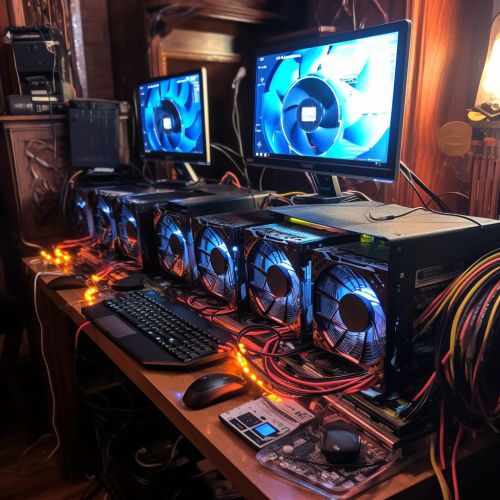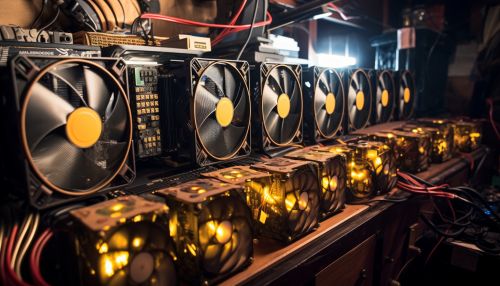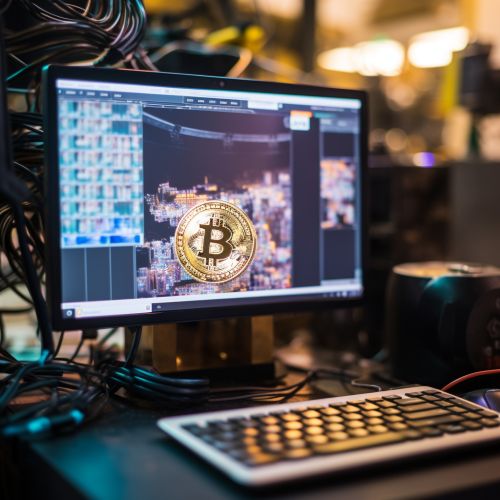Bitcoin mining
Introduction
Bitcoin is a decentralized digital currency, without a central bank or single administrator, that can be sent from user to user on the peer-to-peer bitcoin network without the need for intermediaries. Transactions are verified by network nodes through cryptography and recorded in a public distributed ledger called a blockchain. Bitcoin was invented in 2008 by an unknown person or group of people using the name Satoshi Nakamoto and started in 2009 when its source code was released as open-source software. One of the fundamental processes involved in the operation of the bitcoin network is Bitcoin mining.


Bitcoin Mining: An Overview
Bitcoin mining is the process by which new bitcoins are entered into circulation, but it is also a critical component of the maintenance and development of the blockchain ledger. It is performed using very sophisticated computers that solve extremely complex computational math problems. Cryptocurrency mining is painstaking, costly, and only sporadically rewarding. Nonetheless, mining has a magnetic appeal for many investors interested in cryptocurrency because miners are rewarded for their work with crypto tokens.
The Process of Bitcoin Mining
Bitcoin mining involves two major functions: issuing new bitcoins and verifying transactions. Miners are getting paid for their work as auditors. They are doing the work of verifying the legitimacy of Bitcoin transactions. This convention is meant to keep Bitcoin users honest and was conceived by bitcoin's founder, Satoshi Nakamoto. By verifying transactions, miners are helping to prevent the "double-spending problem."


How Bitcoin Mining Works
When someone makes a Bitcoin transaction, it gets added to a pool of unconfirmed transactions. Various miners then pull this pool of unconfirmed transactions and put them into a block, which is a chunk of transactions bundled together. Miners then compete to validate the transactions by solving complex mathematical problems. They announce their answer to the rest of the network. If the network agrees that the problem was solved correctly, the block is added to the blockchain and the miner is rewarded with Bitcoin.
Bitcoin Mining Hardware
Bitcoin mining requires a computer and a special program, which miners use to compete to solve the mathematical problem. The first miner to solve the problem is rewarded in bitcoin and the transaction is added to the blockchain. Bitcoin mining hardware has evolved dramatically since 2009. At first, miners used their central processing unit (CPU) to mine, but soon this wasn't fast enough and it bogged down the system resources of the host computer. Miners quickly moved on to using the graphical processing unit (GPU) in computer graphics cards because they were able to hash data 50 to 100 times faster and consumed much less power per unit of work.


The Economics of Bitcoin Mining
The economics of bitcoin mining hinge on several variables, including equipment cost, electricity cost, bitcoin price, and more. The cost of mining a bitcoin varies significantly around the world, from as little as $531 to a stunning $26,170, according to a recent report. The report's authors said the cost to mine a bitcoin is largely dependent on electricity prices, which is why mining activity tends to cluster around regions with cheap power.
Environmental Impact of Bitcoin Mining
Bitcoin mining has been criticized for its high electricity consumption, price volatility, thefts from exchanges, and the possibility that bitcoin is an economic bubble. Bitcoin has also been used as an investment, although several regulatory agencies have issued investor alerts about bitcoin. The high energy consumption of bitcoin mining has been widely reported, with one report estimating that bitcoin mining uses more energy than the country of Switzerland.


Conclusion
Bitcoin mining plays a crucial role in the Bitcoin network. It ensures fairness while keeping the Bitcoin network stable, safe, and secure. However, it's also a resource-intensive process with significant environmental impact. As Bitcoin continues to evolve, it will be interesting to see how its mining process adapts.
